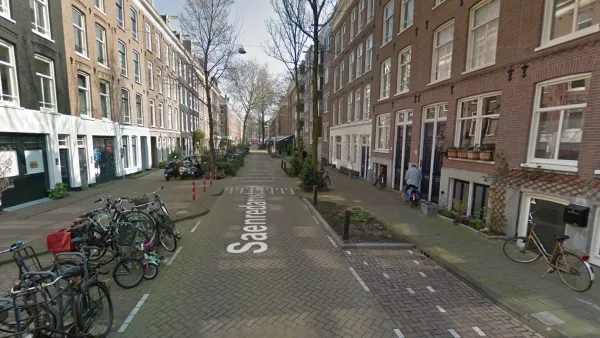New South Wales Government have published the "City Centre Access Strategy", their vision for transport planning in Sydney for the next two decades. Jacob Saulwick reviews the mixed responses to the long awaited plan.
In advance of a meeting of the Central Sydney Traffic and Transport Committee, Transport Minister Gladys Berejiklian and Roads Minister Duncan Gay have published Sydney's "City Centre Access Strategy". The scheme, which responds to Lord Mayor Clover Moore's campaign for greater cycleways, outlines how different transport elements will serve the city.
Light rail will run along George Street, buses will operate along fewer routes through the city, and private vehicles will be encouraged to use the cross city tunnel and park in the "7000 to 21,000 off-street parking spots going unused in the city every day" allowing a reduction in on-street parking. The Government hopes that these measures will help to address the city's chronic congestion. Mr Gay added that there are plans to reduce traffic speeds in the city to 40km/h "to improve road safety" but did not specify which roads would be affected.
In addition, there will be significant investment in cycleways with new routes established along several major streets in the city including King Street, Liverpool Street, Castlereagh Street and Pitt Street down to Circular Quay, and an extension of the cycleway along Kent Street. This will come at the cost of the recently established College Street cycleway which will revert to its former use as an additional lane for traffic.
Although generally supportive of the proposal, Lord Mayor Clover Moore condemned the removal of the cycleway. "The city spent $4.9 million building the College Street cycleway and would expect the state to compensate city ratepayers for its removal, given that the decision to build on College Street, and the need to remove from College Street, are both state government decisions."
The Sydney Business Chamber was more positive. Their Executive Director Patricia Forsythe praised the Government for "clearly been listening to stakeholders in the city centre and has integrated a number of the business community's suggestions and requests into this strategy".
FULL STORY: Sydney cycle lanes completed in new access plan

National Parks Layoffs Will Cause Communities to Lose Billions
Thousands of essential park workers were laid off this week, just before the busy spring break season.

Retro-silient?: America’s First “Eco-burb,” The Woodlands Turns 50
A master-planned community north of Houston offers lessons on green infrastructure and resilient design, but falls short of its founder’s lofty affordability and walkability goals.

Delivering for America Plan Will Downgrade Mail Service in at Least 49.5 Percent of Zip Codes
Republican and Democrat lawmakers criticize the plan for its disproportionate negative impact on rural communities.

Test News Post 1
This is a summary

Test News Headline 46
Test for the image on the front page.

Balancing Bombs and Butterflies: How the National Guard Protects a Rare Species
The National Guard at Fort Indiantown Gap uses GIS technology and land management strategies to balance military training with conservation efforts, ensuring the survival of the rare eastern regal fritillary butterfly.
Urban Design for Planners 1: Software Tools
This six-course series explores essential urban design concepts using open source software and equips planners with the tools they need to participate fully in the urban design process.
Planning for Universal Design
Learn the tools for implementing Universal Design in planning regulations.
EMC Planning Group, Inc.
Planetizen
Planetizen
Mpact (formerly Rail~Volution)
Great Falls Development Authority, Inc.
HUDs Office of Policy Development and Research
NYU Wagner Graduate School of Public Service




























